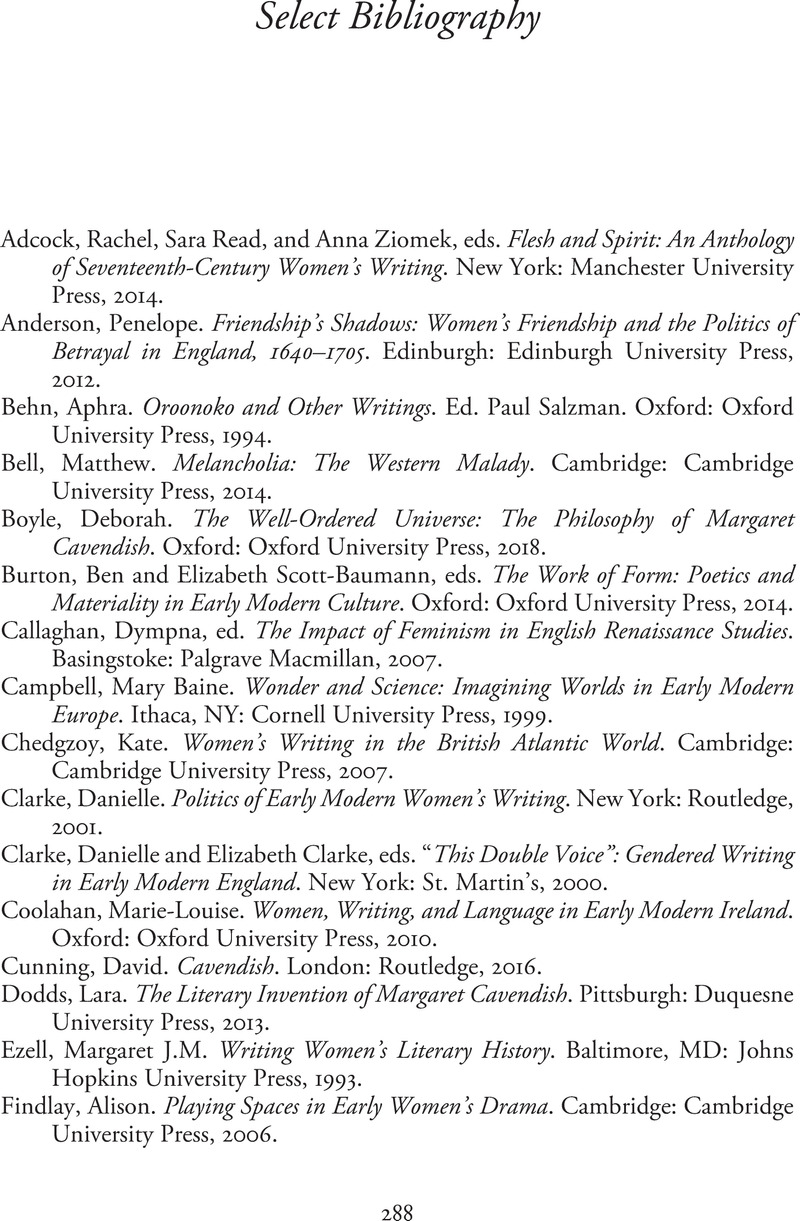Book contents
- World-Making Renaissance Women
- World-Making Renaissance Women
- Copyright page
- Dedication
- Contents
- Figures
- Contributors
- Acknowledgments
- Introduction The Literary Contours of Women’s World-Making
- Part I Early Modern Women Framing the Modern World
- Part II Remaking the Literary World
- Part III Connecting the Social Worlds of Religion, Politics, and Philosophy
- Part IV Rethinking Early Modern Types and Stereotypes
- Select Bibliography
- Index
- References
Select Bibliography
Published online by Cambridge University Press: 25 November 2021
- World-Making Renaissance Women
- World-Making Renaissance Women
- Copyright page
- Dedication
- Contents
- Figures
- Contributors
- Acknowledgments
- Introduction The Literary Contours of Women’s World-Making
- Part I Early Modern Women Framing the Modern World
- Part II Remaking the Literary World
- Part III Connecting the Social Worlds of Religion, Politics, and Philosophy
- Part IV Rethinking Early Modern Types and Stereotypes
- Select Bibliography
- Index
- References
Summary

- Type
- Chapter
- Information
- World-Making Renaissance WomenRethinking Early Modern Women's Place in Literature and Culture, pp. 288 - 291Publisher: Cambridge University PressPrint publication year: 2021

